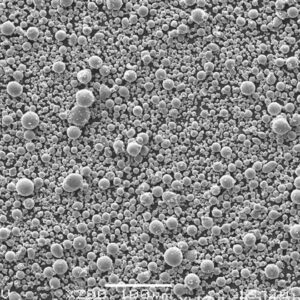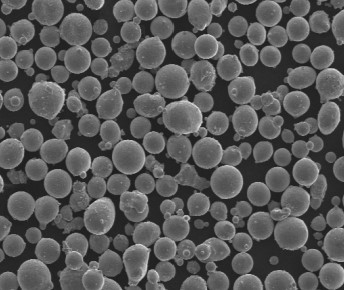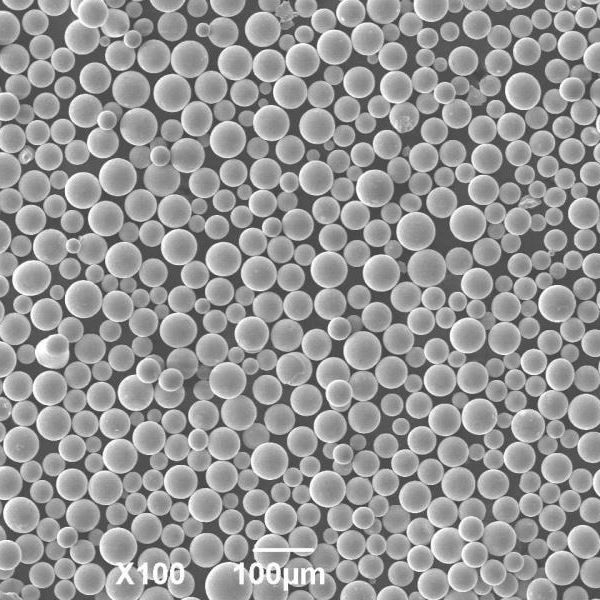Best Stainless Steel 316L Powder for 3D Printing
Stainless steel 316L powder is a versatile and widely used material in various industries. Its unique properties make it suitable for applications ranging from 3D printing to biomedical implants. In this article, we will explore the characteristics, uses, manufacturing process, and advantages of stainless steel 316L powder.
Fast Delivery
High sphericity
High Quality
Small MOQ
Share This Product
Product Description
Introduction
Stainless steel 316L powder is a versatile and widely used material in various industries. Its unique properties make it suitable for applications ranging from 3D printing to biomedical implants. In this article, we will explore the characteristics, uses, manufacturing process, and advantages of stainless steel 316L powder.
1. What is Stainless Steel 316L Powder?
Stainless steel 316L powder is a fine metallic powder composed primarily of stainless steel grade 316L. It is a variant of the popular 316 stainless steel alloy, with the “L” denoting its low carbon content. This low-carbon variation enhances its corrosion resistance, making it highly suitable for various demanding applications.
2. Properties and Characteristics
Stainless steel 316L powder exhibits several key properties that contribute to its wide-ranging applications. These include:
– Corrosion Resistance
Stainless steel 316L is renowned for its excellent corrosion resistance, making it suitable for use in harsh environments. It can withstand exposure to corrosive substances such as acids, alkalis, and chlorides, making it ideal for marine applications, chemical processing, and medical devices.
– High Strength and Durability
316L stainless steel powder possesses high tensile strength, making it mechanically robust and durable. Its strength ensures that components manufactured from this powder can withstand high stress, pressure, and temperature conditions.
– Biocompatibility
The biocompatibility of stainless steel 316L powder makes it a preferred choice in the medical and dental fields. It is widely used for manufacturing surgical implants, prosthetics, and dental fixtures due to its ability to interact safely with the human body without causing adverse reactions.
3. Applications of Stainless Steel 316L Powder
Stainless steel 316L powder finds applications in various industries due to its versatile properties. Some common applications include:
– Additive Manufacturing (3D Printing)
The emergence of additive manufacturing has opened up new avenues for stainless steel 316L powder. Its compatibility with metal 3D printing technologies enables the production of complex geometries and customized components for industries such as aerospace, automotive, and consumer goods.
– Biomedical Implants
The biocompatible nature of stainless steel 316L powder makes it a preferred material for manufacturing biomedical implants. It is widely used in orthopedic implants, dental implants, and cardiovascular devices due to its excellent combination of strength, corrosion resistance, and biocompatibility.
– Chemical Processing
Stainless steel 316L powder is extensively utilized in the chemical processing industry. It is employed in the construction of pipelines, tanks, and reactors, where resistance to corrosive chemicals is crucial. The powder’s high strength and durability ensure the longevity of these components.
4. Manufacturing Process
The production of stainless steel 316L powder involves several stages:
- Atomization: The stainless steel alloy is melted and then atomized using gas or water jets to create fine droplets.
- Solidification: The atomized droplets rapidly cool down and solidify, forming small spherical particles.
- Size Classification: The particles are then classified based on their size to obtain a powder with a consistent particle size distribution.
- Post-Treatment: The powder may undergo additional treatments, such as heat treatment or surface modifications, to enhance its properties further.
5. Advantages of Stainless Steel 316L Powder
Stainless steel 316L powder offers numerous advantages, including:
- Design Flexibility: Its compatibility with 3D printing allows for the production of highly intricate and complex designs.
- Cost-Effective: The additive manufacturing process reduces material wastage, making it a cost-effective choice for small batch production and customization.
- High Precision: 3D printing with stainless steel 316L powder enables precise control over the final product’s dimensions, ensuring accurate results.
6. Challenges and Considerations
While stainless steel 316L powder offers many advantages, there are some challenges and considerations to keep in mind:
- Powder Handling: Proper handling and storage procedures are necessary to prevent contamination and maintain powder integrity.
- Post-Processing: Additional post-processing steps may be required to achieve the desired surface finish and mechanical properties.
- Equipment Requirements: Specialized equipment, such as metal 3D printers or powder metallurgy systems, is needed to work with stainless steel 316L powder.
7. Safety Precautions
When working with stainless steel 316L powder, it is important to follow safety precautions, including:
- Personal Protective Equipment (PPE): Wear appropriate PPE, such as gloves and safety glasses, to protect against potential hazards.
- Ventilation: Ensure proper ventilation in the workspace to minimize the risk of inhaling fine particles.
- Powder Containment: Use sealed containers or systems to store and transport the powder, preventing dispersion and minimizing the risk of ignition.
8. Future Trends
The future of stainless steel 316L powder looks promising, with ongoing advancements in additive manufacturing technologies. Innovations in powder quality, process control, and material development will continue to expand its applications in various industries, including aerospace, healthcare, and automotive.
Conclusion
Stainless steel 316L powder is a versatile material with exceptional properties, making it suitable for diverse applications. Its corrosion resistance, high strength, and biocompatibility make it an ideal choice for industries such as additive manufacturing, biomedical, and chemical processing. However, proper handling, safety precautions, and equipment considerations are crucial for successful utilization of this powder. As technology continues to evolve, stainless steel 316L powder is poised to play a vital role in shaping the future of manufacturing.
FAQs
- Is stainless steel 316L powder suitable for outdoor applications? Yes, stainless steel 316L powder’s corrosion resistance makes it well-suited for outdoor applications where it may be exposed to harsh environmental conditions.
- Can stainless steel 316L powder be used for jewelry making? While stainless steel 316L powder can be used for jewelry making, its adoption is relatively limited compared to other materials such as gold or silver.
- Does stainless steel 316L powder require post-processing? Depending on the desired properties and surface finish, stainless steel 316L powder may require post-processing steps such as heat treatment or polishing.
- Is stainless steel 316L powder magnetic? No, stainless steel 316L powder is non-magnetic in its annealed condition. However, it can become weakly magnetic after undergoing cold working processes.
- Where can I obtain stainless steel 316L powder? Stainless steel 316L powder can be obtained from specialized metal powder suppliers, online marketplaces, or directly from manufacturers.
PREP System
AM Powder
Sent Inquiry
Any questions? Send us message now! We’ll serve your request with a whole team after receiving your message.
Related products
-

stainless steel 304 Powder for 3D Printing
304 powder is a form of stainless steel powder that…
-

Best Inconel 738LC powder for 3D printing in 2023
Inconel 738LC powder is a remarkable superalloy that boasts exceptional…
-

Niobium Powder
Niobium is used in prosthetics and implant devices, such as…
-

304l Stainless Steel Powder
Additive manufacturing (AM), also known as 3D printing. 3D printing…
Applications
How we play a role in the industry
HIP Technology
Hot Isostatic Pressing (HIP) technology works by placing the product in a closed container, filling it with inert gas and sintering or densifying the product at a very high temperature (usually close to the forging temperature of the material) and at a very high pressure (usually 100 – 140 MPa). This allows the product to be sintered or densified.
MIM Technology
MIM products can be complex in shape, precise in size, high in strength and produced automatically in large quantities, and can significantly reduce the complexity and cost of traditional metalworking
SLM Technology
SLM, also known as Selective Laser Melting, is similar in principle to SLS in that a laser is used to melt and solidify metal powder in a specified area, which is then moulded in a layer-by-layer stack.
EBM Technology
Electron beam melting refers to a vacuum melting method in which the kinetic energy of a high speed electron beam stream is converted to heat as a heat source for melting metals under high vacuum. The abbreviation is EBM.
POPULAR SERVICE
Our Professional Services
For Additive Manufacturing
Various Products
Here we provide more than 40 grades of high-quality powders.
3D Printing
SEBM&PREP technology and equipment.
Customization
Accept OEM/ODM
No Risk
Perfect supply chain layout
High Quality
Top sales and quality
Fair Prices
High quality products at reasonable prices
Send Inquiry
Thank you for your interest in our products. If you have any enquiry about quotation or cooperation, please feel free to leave us message by using the following enquiry form. Our sales representative will contact you within 24 hours.


